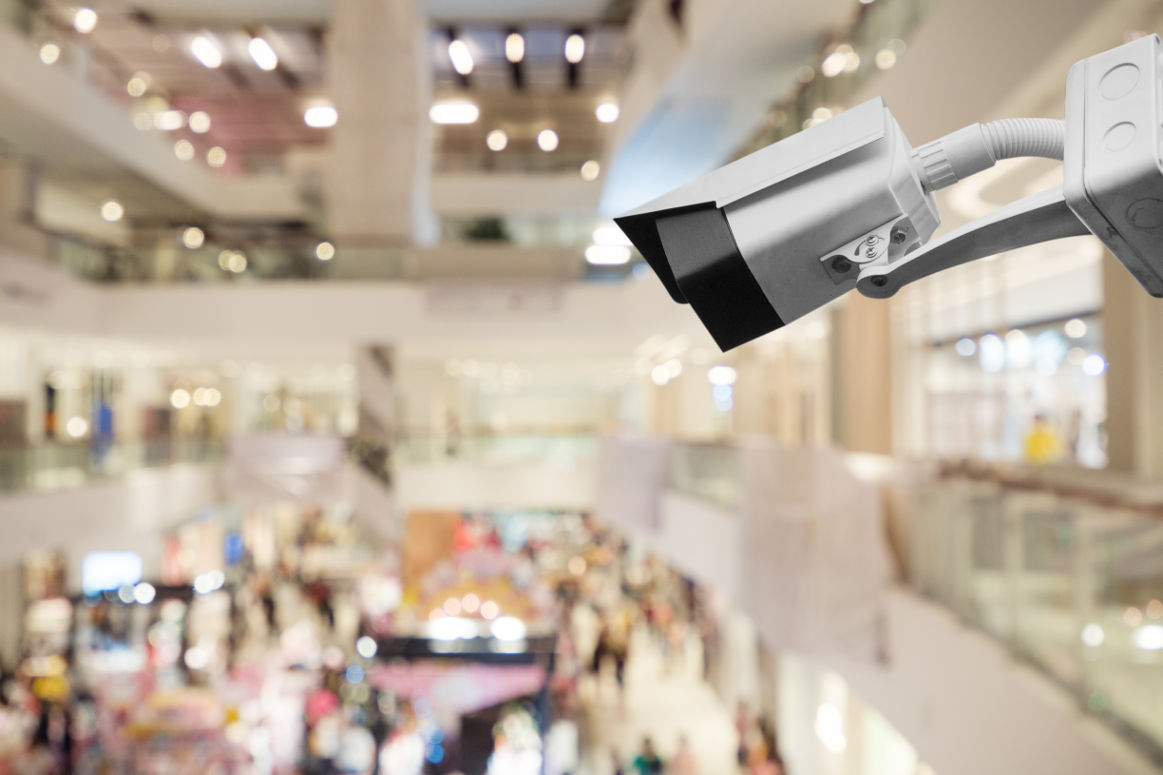Find The Right Video Surveillance Camera
Understanding common terms and standards in the process of selecting Video Surveillance Cameras can help your organization choose the right camera for your application. Let’s walk through some key terms and how New Era takes approaches to ensure the best option for your business.
Coverage Area
The most important variable to a Video Surveillance System is the intended area to monitor. Without this information, it is impossible to select the right camera for the application. Utilizing this information, crucial information can be determined, such as Angle of View, Field of View (FOV), Depth of Field, and Lighting, and Obstructions.
The Angle of View and Field of View are often interchanged in discussions. However, they do not have the same meaning. The Angle of View is the image the camera captures and is measured in degrees from the camera lens. Field of View is the length of the image the camera captures at a certain distance from the camera lens. Both can be measured horizontally, vertically or diagonally.
Interior or Exterior Video Surveillance Camera
Although exterior cameras may be used on the interior, the same cannot be said about interior cameras on the exterior. All electrical, electronic, and related technologies have international standards set forth by the International Electrotechnical Commission (IEC). The IEC’s International Protection Code 60529 rates the degree of protection against dust and water enclosures for electric and electronic equipment. The first number in the IP Code represents the solid particle protection and is rated from zero (no protection) to six (no dust ingress, performed in a vacuum). The second number represents liquid ingress protection and is rated from zero (no protection) to nine (close-range high pressure, high temperature). The most common indoor ratings are IP51 and IP52. The most common outdoor ratings are IP66. This information must be taken into consideration after determining what environment the camera will reside.
Another consideration is areas the camera is prone to be vandalized. The IEC’s Impact Protection Rating Code 62262 or IK Code rates enclosures protection against impacts. The IK rating ranges from zero to ten and is measured by the Kinetic energy (joules) at impact. The enclosure must resist this impact five times to receive the rating. Depending on the rating, a Pendulum, Spring or Freefall hammer is used for impaction. The most common ratings are IK08 and IK10.
Video Camera Resolution
In the past, analog cameras were our only option. The resolution was rated by the number of horizontal “TV lines” of the image. Today, most video surveillance cameras are IP cameras. IP cameras are rated by the number of pixels in the image. One million pixels is a megapixel (MP). Yesterday’s best analog cameras do not compare to today’s IP cameras—technology has come a long way.
The intent of the system or even each individual camera should be qualified before cameras are selected. It is essential to understand the level of detail desired at each camera location. Camera selection impacts the bandwidth, storage, and overall cost of the project.
Lens Considerations
Although the lens topic could be its’ own article, let’s walk through a few basics. A lens can be made of glass, crystal or plastic. The lens will either be converging or diverging. Converging lenses used in surveillance cameras bend the light towards the image sensor. The opposite would be said about diverging. Surveillance cameras use one or more and a combination of lenses to achieve the desired image.
The two main categories of camera lenses are fixed and varifocal. The fixed lens is permanently set and cannot be adjusted. Varifocal lenses can be adjusted to view a certain area of the FOV, making them more flexible. Varifocal lenses are either motorized or manually adjusted. Motorized varifocal lenses reduce operational costs with the capability to zoom and focus the camera remotely. There is no need to be at the camera for adjustments physically, should the camera lose focus.
Video Surveillance Lighting
Lighting is one of the most significant obstacles to overcome when designing a video surveillance system, especially when natural light is involved. Each camera has a dynamic range of light its image sensor can use without underexposing or overexposing the image. When the dynamic range is exceeded, the image quality is degraded. Selecting a wide dynamic range (WDR) camera helps broaden the range of light levels the camera can capture. An area that would benefit from WDR would be a lobby where the light levels from the sun change throughout the day, and the opening of the doors allows more sunlight in. Without WDR, the person entering would not be identified due to the excess light.
Manufacturers have produced cameras that perform well in low-light situations. The cameras can capitalize on light sources such as ambient light, emergency lighting, exterior lighting, etc. Infrared (IR) is utilized to see in low light and even total darkness when the low light technology is not enough. Light Emitting Diodes (LED) are typically used to produce IR light. Humans do not see the IR light, but the camera can use this light to illuminate and capture images.
Features
The technology in cameras is ever-changing. Aside from the previously mentioned features, cameras use motion detection, two-way audio communication, audio & video analytics, tamper detection, edge storage, and even smartphone apps.
To learn more about Video Surveillance Cameras or how New Era Technology’s exceptional team of designers can assist you with your next project, please email us at solutions@neweratech.com.

 Canada
Canada Australia
Australia New Zealand
New Zealand UAE
UAE United Kingdom
United Kingdom




